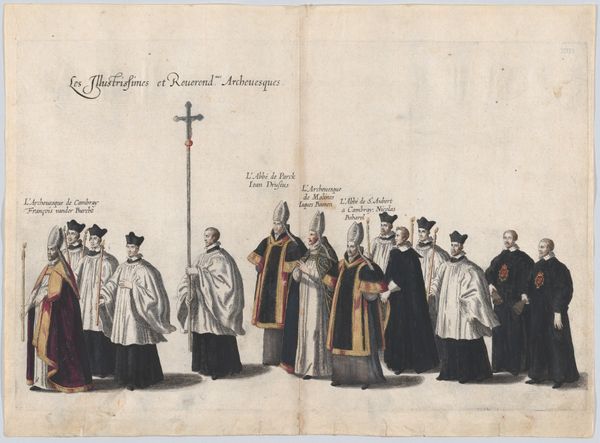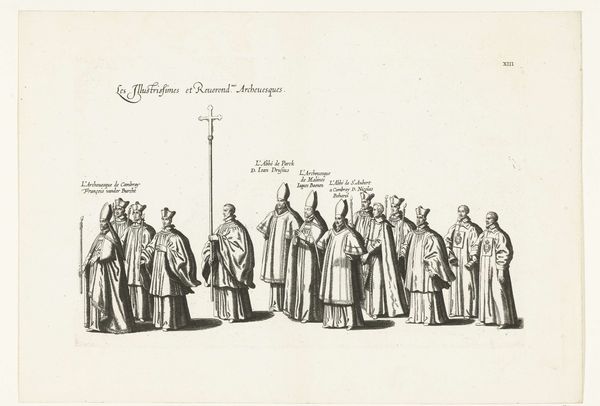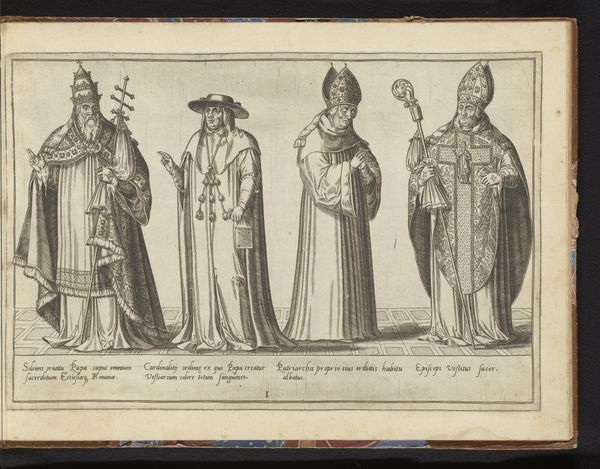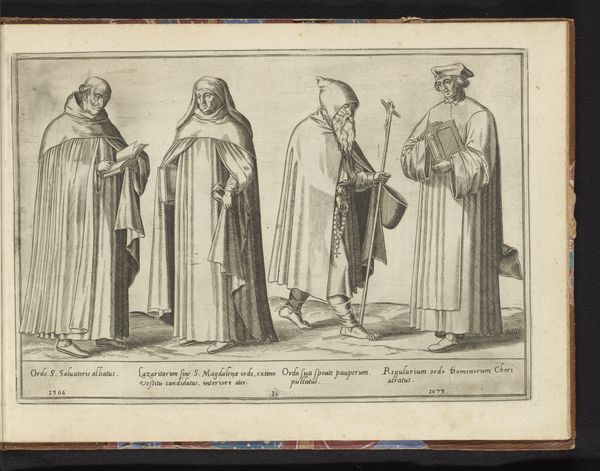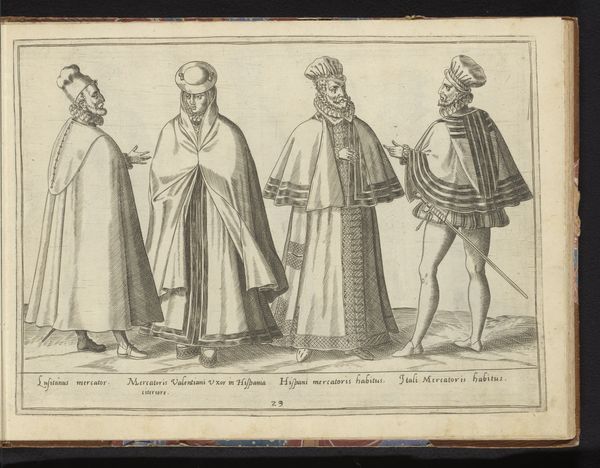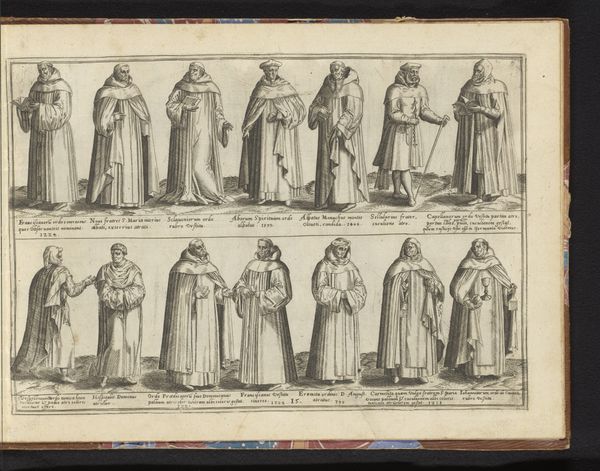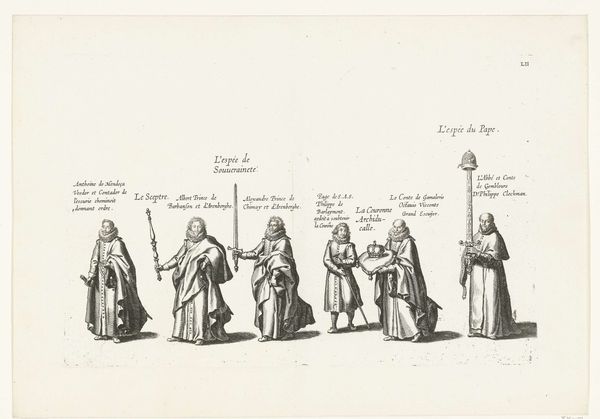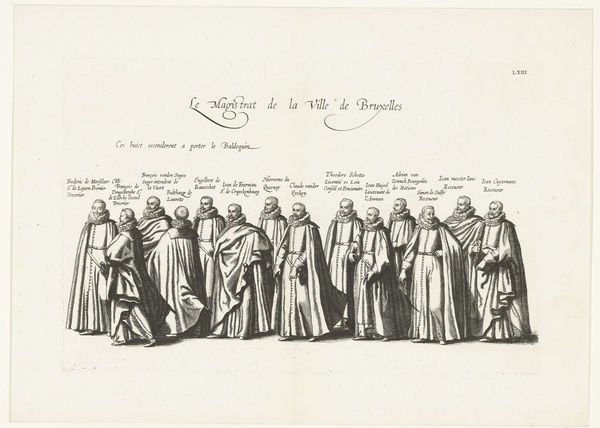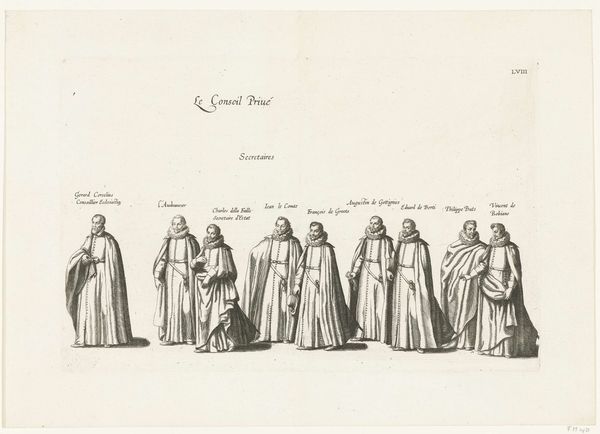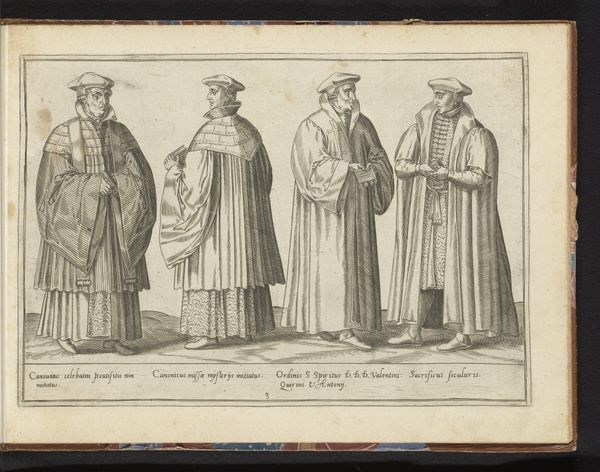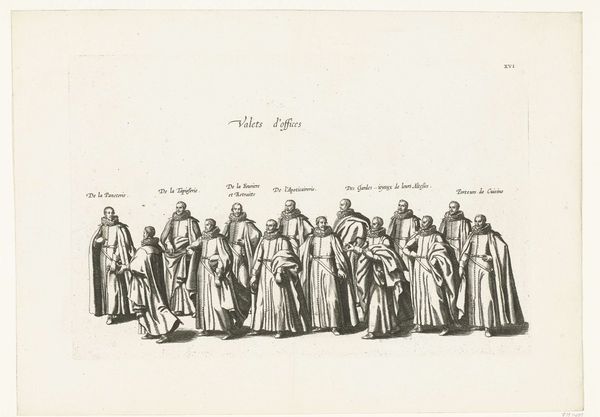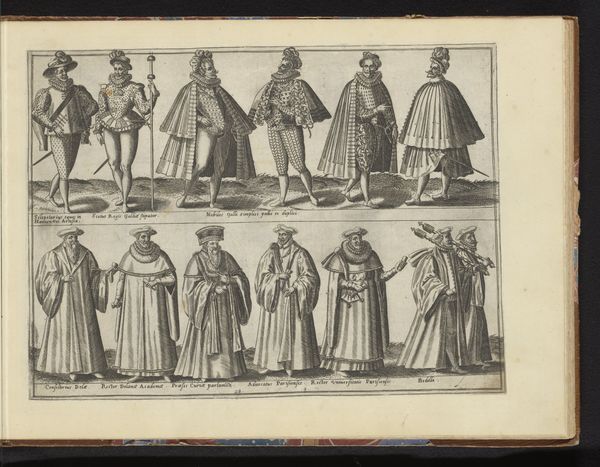
Plate 12: Members of the clergy marching in the funeral procession of Archduke Albert of Austria; from 'Pompa Funebris ... Alberti Pii' 1623
0:00
0:00
drawing, print, engraving
#
drawing
#
baroque
# print
#
group-portraits
#
history-painting
#
engraving
Dimensions: Sheet: 11 3/16 × 15 1/4 in. (28.4 × 38.8 cm) Plate: 10 3/16 × 14 9/16 in. (25.8 × 37 cm)
Copyright: Public Domain
Curator: Here we have Plate 12 from "Pompa Funebris...Alberti Pii," an engraving dating back to 1623, attributed to Cornelis Galle I. The scene depicts members of the clergy in a funeral procession for Archduke Albert of Austria. Editor: My first impression is one of solemnity and perhaps a touch of theatricality. The way the figures are arranged, so formally and uniformly, creates a very staged, almost artificial sense of mourning. Curator: The production of such a detailed engraving in the 17th century tells us a great deal about the significance placed on commemorating powerful figures. Think about the skilled labor required, the expense of materials like the paper and ink. This print served as a lasting record, a tangible expression of power. Editor: Indeed. The imagery is dense with symbolism. Each cleric, adorned in distinctive vestments and carrying a staff, is like a walking emblem of their office and their faith. Even the somber colors of their garments – the blacks and purples – reinforce this idea of established, weighty tradition. Note the elaborate mitres, almost crown-like... Curator: The procession itself can be viewed as a symbol of continuity, both of the church and the Habsburg dynasty. The materials of their robes also signify much, like velvet and possibly even gold threading indicating an abundance of riches. Also the various artisanal methods and skills deployed for the making of such clothing highlights an impressive network of labourers. Editor: Precisely. Beyond the immediate context of the funeral, these images also communicate deeper ideas about authority and divine right. By immortalizing the procession, the print reaffirms the church's and the aristocracy’s cultural dominance at the time. Look closely at the different levels of details for each of the depicted characters, how they convey their individuality through such symbolic clothing! Curator: Examining such work allows one to think about how meaning is manufactured, disseminated, and consumed, with implications for political power as much as for artistic innovation. These prints have material reality that connected to power and influence within this context. Editor: And on that note, reflecting on the enduring visual vocabulary of loss and power reminds us that imagery carries resonance that can far outlast the individuals and circumstances it initially represents. The gravity within is more palpable than initially anticipated!
Comments
No comments
Be the first to comment and join the conversation on the ultimate creative platform.
